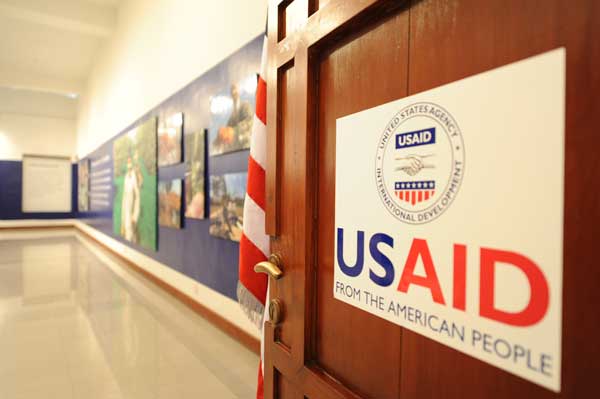
The newly formed US Global Development Lab is set to offer up scientific solutions to the world’s poverty problems—and end extreme poverty by 2030. Credit: USAid Asia on Flickr (Creative Commons License).
The US Agency for International Development (USAID), created in 1961 to carry out foreign policy “while improving lives in the developing world,” recently announced a US-sponsored global development lab that wants to help end extreme poverty by 2030.
According to a USAID release, the US Global Development Lab will “foster science-and technology-based solutions” to the world’s poverty problems as the lab and its 32 partner organizations—DuPont, Microsoft, Intel, MIT, and Nike among them—tackle tough issues like water, health, food security and nutrition, energy, education, and climate change.
(Though unrelated, the announcement comes on the heels of this recent post about Google’s vice president of energy, Arun Majumdar, who told an Oak Ridge National Laboratory audience that advances in science and engineering were vital in meeting global energy challenges.)
“To solve our most intractable development challenges, USAID has established a new way of working, bringing on board the best and brightest staff and new partners, all working in concert to help end extreme poverty,” says Administrator Rajiv Shah. “The Lab will engage a global community of inventors, academics, researchers, entrepreneurs, investors, and corporate leaders in science and technology to invent, test, and scale the most promising and cost effective solutions to end extreme poverty.”
The Guardian reports that nearly $1 billion will be invested in the efforts each year. The agency also will add to its roster of scientists and technology talent, tapping into the expertise of 65 fellows from the Association for the Advancement of Science.
Here’s a sampling of soundbytes from the Lab’s inaugural partners—who bring “cutting-edge technologies, deep expertise, advanced research and development capabilities, far-reaching networks of customers, suppliers and community organizations” and already invest some $30 billion in independent research and innovation partnerships—direct from the USAID release:
Jim Borel, Executive Vice President, DuPont “Science and innovation bring an intrinsic value to efforts to solve the world’s biggest challenges such as food insecurity and poverty. We at DuPont are excited to join the USAID Global Development Lab as a part of our commitment to collaborating to deploy global science and local solutions to these challenges.”
Anthony Salcito, Vice President, Worldwide Education, Microsoft Corp. “Microsoft has a vested interest in ensuring today’s students are prepared for tomorrow’s workforce: they are our future employees, customers, and partners. Education is a pivotal step on the path to eradicating extreme poverty. It is a privilege to partner with USAID as we work together toward a world in which every student has the opportunity to realize their full potential.”
Chris Coons, U.S Senator (D-DE) “We live in a remarkable age of invention, innovation and discovery, where the pace of technological advancement is breathtaking. Through the Global Development Lab, the folks of USAID can help harness the power of technology and innovation to ensure that our dollars go farther, and that our impact in development is bigger, broader and bolder. We can work collaboratively with technology leaders, the private sector, and with innovators all over the world in a way that can tackle and solve the great challenges of development.”
Bish Sanyal, CITE Director and Principal Investigator, Ford International Professor of Urban Development and Planning, Massachusetts Institute of Technology ”The newly established Global Development Lab will serve as a catalyst facilitating a synergistic relationship between technological innovations, rigorous evaluations and commercializations of products which will enhance the quality of lives of people around the world. Well utilized funds can indeed serve as a glue in holding up a new architecture of developmental efforts! MIT is proud to participate in this bold new effort.”
Sir Andrew Witty, CEO, GlaxoSmithKline “I am delighted that GSK is supporting the US Global Development Lab as an inaugural Cornerstone Partner. This kind of innovative partnership holds great promise for helping to improve health around the world. We will explore ways to collaborate with USAID to use science, technology, innovation and partnerships for solving global development challenges in a way that could potentially benefit millions of people.”
Though its cornerstone partners are prepared for the agency’s shift in focus, according to Nature, many worry that the lab may not be.
“Some observers are worried that the pendulum at USAID may be swinging too quickly in the direction of research. Casey Dunning, a senior policy analyst at the Center for Global Development, a think tank in Washington DC, says that the wider development community may not have the scientific expertise to hold USAID to account for its spending. And Amanda Glassman, director of global health policy at the Center for Global Development, says that USAID has limited experience in identifying promising technologies.”
Do you think the lab is taking on too much, or not enough? Tell us why or why not in the comments.
Feature image credit: US Embassy Pakistan on Flickr (Creative Commons License).

